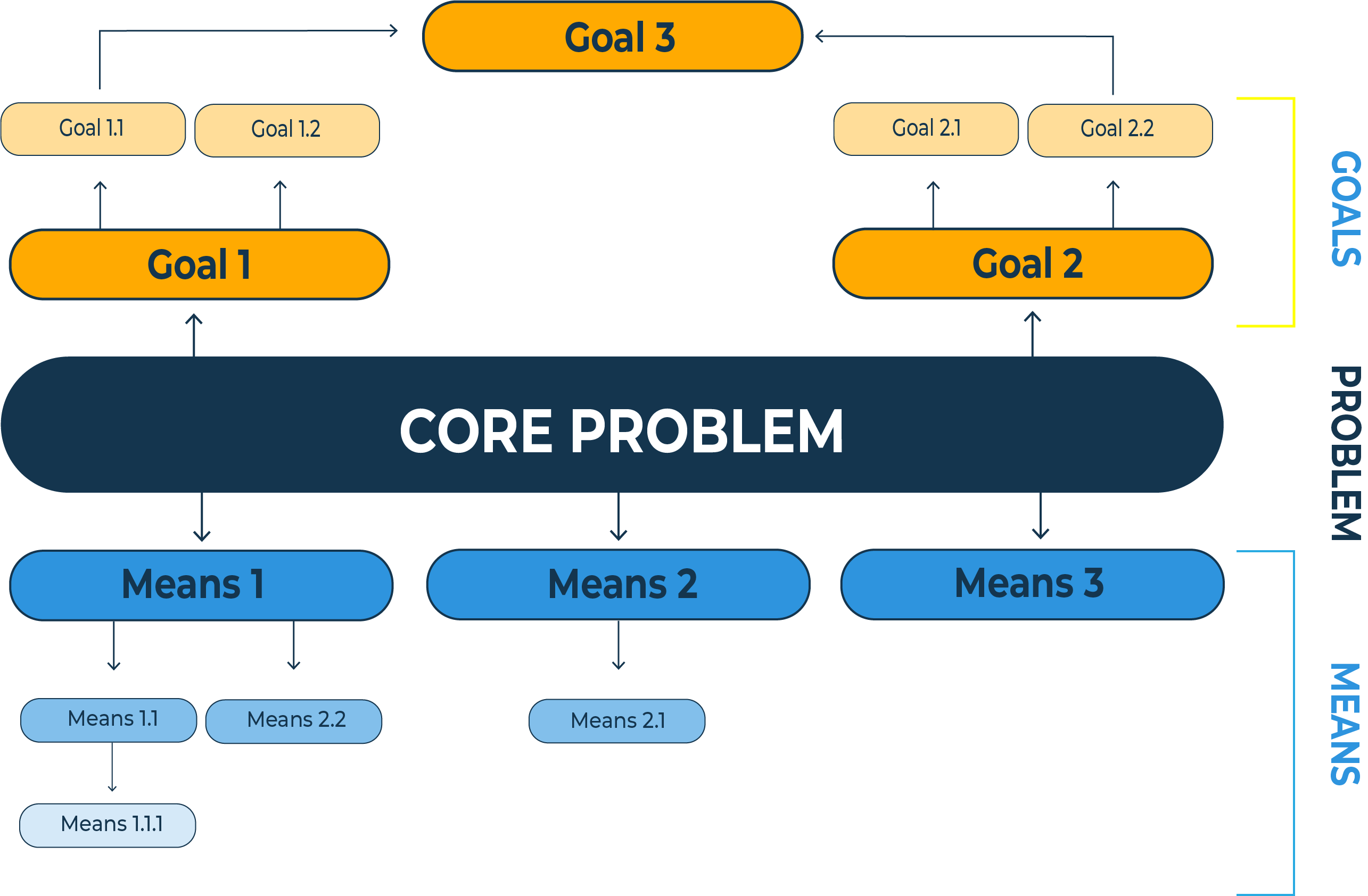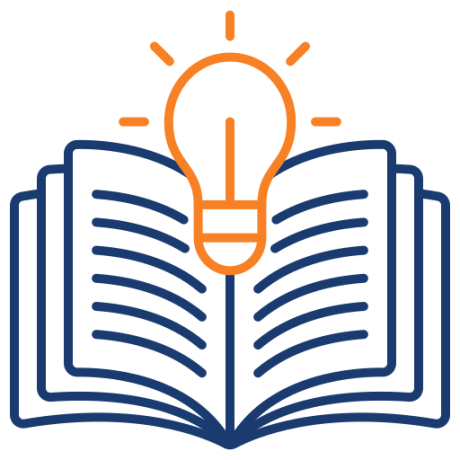The design stage is the second stage of the process. It involves a thorough analysis of the problem to define its objectives, how these will be addressed, and the possible solution alternatives.
The analysis of the problem involves reviewing feasibility and viability studies, identifying impacts and the technical evaluation. This allows the strategic organization of ideas, materials, and processes to achieve the objectives, prevent early-stage problems, and provide parameters to optimize crucial aspects of the project.
Definition of objectives and scope
Here, we will examine some key aspects to consider when formulating a program’s general and specific objectives and the definition and application of the tool called “Goal-Means Tree”.
The objectives represent the programs’ expected results and can be general or specific.
The general objective:
Arises from the identification of the problem in the diagnostic stage.
Establishes a working hypothesis that guides the project.
Is formulated in terms of a positive action that defines specific purposes and provides possible solution alternatives.
Must be realistic, effective, coherent, and quantifiable.
A general objective should NOT include:
On the other hand, specific objectives:
Focus on concrete solutions that the project must achieve in a given time frame.
Arise from a desirable situation.
Specific objectives must be:
It is a tool that graphically represents the relationships between goals and means around the identified problem. In this tree, all the causes of the problem tree (Diagnostic Stage) are transformed into means to achieve the objectives, while the effects become goals. Similarly, the core problem becomes the core objective or purpose of the project.

Alternative analysis
Once the core problem and the project’s objective have been recognized, feasible and pertinent alternative solutions must be identified, which requires to1:
Evaluate their impact on the problem’s solution and prioritize those with the greatest presumed impact.
Evaluate the degree of dependence between the alternatives.
Verify the feasibility of the alternatives, including physical, technical, budgetary, institutional, and cultural feasibility, among others.
It is important to carry out an exhaustive characterization of each proposed alternative (including costs and benefits) to compare them and begin their respective analysis. Keep in mind that this process is iterative and requires constant feedback.
To analyze the solution alternatives, criteria must be established to identify their feasibility and relevance. The criteria will depend on the nature of the project or the problematic situation to be addressed, for example:
Once the criteria are defined, they are used to elaborate an alternative selection matrix. This scheme allows a quantitative weighting of the alternatives according to the established criteria.
Theory of Change
The Theory of Change is a representation of how the program or intervention leads to the desired results2 and adds value throughout the transformation process. It is a structured and logical approach that connects the program components, namely inputs, activities, outputs, intermediate results, and final results. Depending on the situation, the Theory of Change can be adapted to align with the specific goals of the program. For example, primary and secondary activities can be included as appropriate.
By establishing causal relationships between the ‘hows’ and ‘whys’, and by exposing these connections, the Theory of Change facilitates an understanding of how the intended outcomes are expected to be achieved.
According to the World Bank3, a properly formulated Theory of Change should:
The causes of the “core problem” are not always identified in the diagnosis; it is necessary to rely on the literature to support the relationships, i.e., to conduct a state-of-the-art study.
Describe the program accurately with the model
Ensure that its relationships are feasible and consistent
Avoid gaps in the logical chain of events
Ensure that its elements are sufficient and necessary
Produce the achievement of the stated goals in a meaningful and realistic way
Have all its elements well-defined
Logical Framework Matrix
The Logical Framework Matrix (LFM) summarizes the project’s goal, purpose, components, and activities (rows of the matrix) by describing its indicators, means of verification, and assumptions (columns of the matrix). Accordingly, it presents a summary of the project’s most important aspects, allowing us to assess the scope of the objectives and to define the external factors that may influence its success.

The rows of the Logical Framework Matrix correspond to:

The columns of the Logical Framework Matrix correspond to:
Technical study of the project
The technical study of the project is the last component of the design stage, which analyzes aspects such as the baseline situation, size, location, technology, community participation, environment, and internal and external factors that may affect the program’s success.
Optimized baseline
Size
Location
Technology
Community involvement
Environment
Internal and external factors
- Clarity in defining objectives
- Respect for a robust methodological framework
- Identifying risks and generating solutions to them
- Successful and assertive communication
- Evaluation assurance
This second stage of an educational program lifecycle is essential to identify the mechanisms by which inputs will be transformed for the benefit of the population of interest.
Elements for evaluation
For the project to function adequately and with plenty of opportunities for improvement, it is essential to contemplate its evaluation from the program design. Particularly, it is essential to always consider the information requirements that allow the development of stages 4 and 5 of the process, which comprise the project evaluation.
The following is a series of key points on the information requirements of each of the components of the stages mentioned above.

Process evaluation and implementation results

Results evaluation

Impact evaluation
Ideally, the members of both the control and the beneficiary groups should be randomly selected to ensure that at the start of the intervention, the only difference between the two groups is their participation in the program.
Randomization of treatment can be done in different ways, each of which has particular information requirements. A more detailed description of the randomization process can be found in the evaluation stage. The different cases that can be presented in terms of the elements required for evaluation are:

Cost-effectiveness analysis
- 1. Ortegón, E., Pacheco, J. y Roura, H. (2005). Metodología general de identificación, preparación y evaluación de proyectos de inversión pública. Serie Manuales, núm. 39. Santiago de Chile: ILPES-CEPAL. Extracted from: http://repositorio.cepal.org/handle/11362/5608
- 2. Morra-Imas, L. G. y Rist, R.C. (2009). El camino hacia los resultados: diseño y realización de evaluaciones eficaces para el desarrollo. Washington D. C.: WorldBank.
- 3. World Bank. (n. d.) Árbol de problemas y Experiencias. Unpublished document.


















